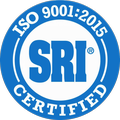
It’s time to talk about nickel. Now if you’re like most people, you just think of “nickels,” aka 5 cent pieces we use for money. But there’s nickel, element number 28 on the periodic table, with an atomic mass of 58.69. Nickel is used in a variety of ways– you’ll find it all around you in things like coins (ae sao foʻi), batteries, magnets and stainless steel, just to name a few…
What You Should Know About Nickel
Nickel has been around for a long time– even artifacts from 5000 BC have nickel in them. Nickel is thought to have come to Earth via metallic meteorites. Today it’s the fifth most abundant element in the Earth, with more of it being found in the core rather than the crust. If you wanted to visit the world’s largest known nickel deposit, you’d go to Sudbury, Ontario, Kanata, to an area covering 37 miles long and 17 miles wide.
What kind of metal is nickel? Ia, it’s ductile, malleable and hard– a shiny silver metal with a slight gold tinge. It takes a high polish and resists corrosion. A fair conductor of electricity and heat, nickel is one of three elements that are ferromagnetic at room temperature. Nickel magnets are very strong. E ui o lea, nickel has a high melting point (1453 tikeri Celsius) and readily forms alloys.
Nickel is often used to make corrosion-resistant alloys such as stainless steel and heat-resistant steel. Some nickel is used for plating, as well as batteries, coins and electronics. If you add nickel to glass, it gives it a greenish tint. And did you know this? Nickel can be used as a catalyst to hydrogenate vegetable oil. Nickel– it’s versatile.
Mulimuli ane, here’s something unique– today’s U.S. nickels aren’t mostly nickel! They’re more copper than nickel. And if you were to get a Canadian nickel? It’s made mostly of steel.
If you’re looking to partner with an industrial nickel supplier, aoao pe faapefea ona fesoasoani Eagle Alloys.






